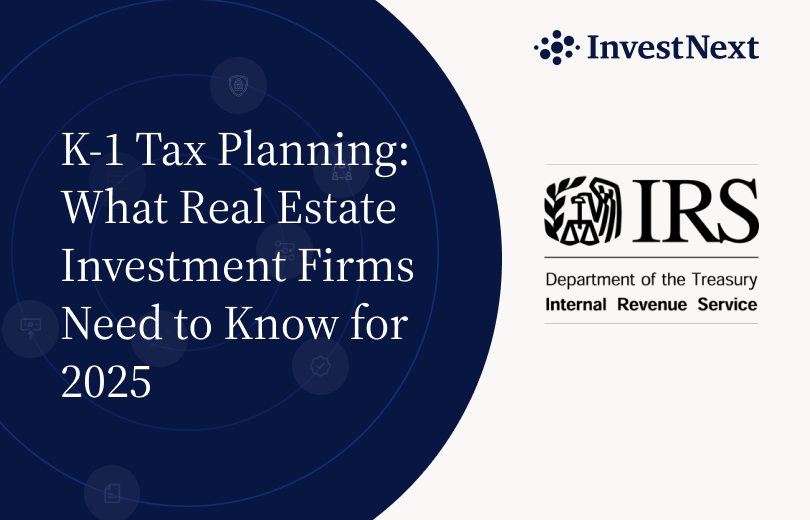A 1031 exchange, also referred to as a like-kind exchange, is a type of tax-deferral strategy that allows commercial real estate investors to defer capital gains tax on the sale of a property when reinvesting the proceeds into another similar property. This exchange is made possible by Section 1031 of the Internal Revenue Code, which provides a legal framework for such transactions.
By completing the exchange, taxpayers can grow wealth, avoid taxes on property sales, and replace investment assets. To make the most of this opportunity, investors must meet timing requirements and find suitable replacement properties.
Through a 1031 exchange, investors have two options: they can either sell their original property before acquiring the replacement (known as the delayed method), or they can exchange the properties simultaneously. If a taxpayer opts for the tax-deferred exchange, this would involve the taxpayer closing on both the relinquished property and the replacement property on the same day.

Types of 1031 Exchanges
There are four types of 1031 exchanges available to defer taxes, each suited to different transaction scenarios:
Construction Exchange
A construction exchange permits investors to utilize a portion of the sale proceeds to make improvements on the replacement property. However, the timeframe remains the same, allowing only limited construction activities. This type is commonly used for customizing or modernizing the property according to the buyer’s specific requirements.
Delayed Exchange
A delayed exchange is the most common type. It involves selling the relinquished property first and then identifying a replacement property within 45 days. The purchase of the replacement property must be completed within 180 days. This type is suitable for investors who plan to sell their property but haven’t finalized their replacement choice yet.
Reverse Exchange
A reverse exchange entails identifying and purchasing the replacement property before selling the relinquished property. This type is beneficial for investors who have identified the replacement property but need time to prepare the relinquished property for sale or have not decided which property to sell.
Simultaneous Exchange
In a simultaneous exchange, the relinquished property is sold and the replacement property is purchased on the same day. This option is ideal for investors who have already identified their desired replacement property.
How Does a 1031 Exchange Work?
By selling a property and reinvesting the proceeds into a like-kind property of similar nature and value, sellers can delay the payment of capital gains taxes. If the sale doesn’t generate any proceeds, meaning there is no profit gained, there won’t be any taxable income. The process involves four key steps:
- Sale of the Relinquished Property: The investor sells their current commercial property, known as the relinquished property.
- Identification of Replacement Property: Within 45 days of the sale, the investor must identify potential replacement properties that meet the like-kind requirement.
- Purchase of the Replacement Property: The investor acquires the replacement property within 180 days of the sale. The purchase is funded using the proceeds from the sale of the relinquished property, preserving the tax-deferred status.
- Tax Deferral: By completing the exchange, the investor can defer paying capital gains tax on the profit made from the sale of the relinquished property. The tax liability is postponed until a future taxable event, such as selling the replacement property without reinvesting the proceeds.
Here’s an example to illustrate the process:
Let’s say an investor owns a commercial office building that has appreciated significantly over the years. They decide to sell it for $2 million. Without a 1031 exchange, they would have to pay capital gains tax on the profit made from the sale.
To defer the tax, the investor identifies a like-kind replacement property, such as a retail shopping center, worth $2.5 million within 45 days of the sale. They proceed to purchase the shopping center using the $2 million proceeds from the office building sale, along with additional funds if required.
By completing the 1031 exchange, the investor can defer paying capital gains tax on the $2 million profit made from the office building sale. They have effectively reinvested the funds into another commercial property, allowing them to continue growing their real estate portfolio while deferring the tax obligation.
It’s important to note that engaging qualified professionals, such as tax advisors and intermediaries, is essential for ensuring compliance with IRS regulations and maximizing the benefits of a 1031 exchange in commercial real estate transactions.

Benefits of a 1031 Exchange
Tax Deferral
As mentioned in the beginning, one of the primary benefits of a 1031 exchange is the ability to defer capital gains tax. By reinvesting the proceeds from the sale of a property into another like-kind property, investors can postpone paying taxes on the capital gains. This deferral allows investors to have more funds available for reinvestment, thereby maximizing their purchasing power.
Increased Cash Flow
When investors utilize the 1031 exchange strategy, they can acquire properties with potentially higher income-generating capabilities. By leveraging tax deferral and reinvesting in properties with better cash flow prospects, investors can enhance their monthly income and overall returns on investment.
Portfolio Diversification
The 1031 exchange provides an opportunity for investors to diversify their commercial real estate portfolios. By selling a property and acquiring another asset in a different location, investors can spread their risk across various markets and property types. This diversification can mitigate the impact of market fluctuations and potentially enhance long-term investment stability.
Requirements for a 1031 Exchange
To qualify for a 1031 exchange and enjoy its tax benefits, certain requirements must be met:
Property Eligibility
Both the relinquished property (the one being sold) and the replacement property (the one being acquired) must be held for investment or used in a trade or business. Personal residences or properties primarily held for resale do not qualify.
Like-Kind Property
The replacement property must be of “like-kind” to the relinquished property. In the context of commercial real estate, the term “like-kind” is broadly interpreted, allowing investors to exchange a wide range of property types. For example, an investor can exchange an office building for a retail shopping center or an apartment complex.
Identification and Timelines
Once the relinquished property is sold, the investor must identify potential replacement properties within 45 days. The investor must also acquire the replacement property within 180 days from the sale of the relinquished property.
Qualified Intermediary
To facilitate the 1031 exchange, investors must work with a qualified intermediary (QI). The QI plays a crucial role in ensuring compliance with IRS regulations and helps facilitate the transfer of funds between the sale and purchase of properties.
Strategies for Maximizing a 1031 Exchange
Proper Planning and Timing
To maximize the benefits of a 1031 exchange, it is essential to plan the transaction carefully and consider the timing. Engaging with experienced real estate professionals, such as attorneys, accountants, and brokers, can help ensure a smooth and successful exchange process.
Reinvestment in Properties with Strong Growth Potential
When selecting replacement properties for a 1031 exchange, it is crucial to assess their growth potential. Investing in properties located in emerging markets or areas with high demand can lead to greater appreciation and rental income potential, further optimizing your investment returns.
Consider Triple Net (NNN) Properties
Triple net lease properties offer an attractive option for investors seeking passive income and reduced management responsibilities. In a triple net lease, the tenant is responsible for expenses such as property taxes, insurance, and maintenance costs, relieving the landlord of these financial burdens. Investing in triple net properties can provide stable cash flow and long-term lease agreements, making them an excellent choice for a 1031 exchange.
Utilize Delaware Statutory Trusts (DSTs)
Delaware Statutory Trusts (DSTs) offer a viable solution for investors looking to diversify their portfolios and enjoy the benefits of fractional ownership. By pooling resources with other investors, DSTs allow access to institutional-grade properties, such as apartment complexes, shopping centers, and industrial properties. Investing in DSTs can provide passive income, professional management, and potential appreciation, making them an attractive option for investors seeking a hassle-free 1031 exchange.
FAQs
What is the receipt of “boot” in a 1031 Exchange?
In a 1031 Exchange, “boot” refers to any non-like-kind property received as part of the exchange, such as cash, stocks, bonds, notes, ownership interests, or debt relief. Boot assets are typically taxable if received. Engaging a qualified intermediary is crucial as they can provide guidance on the taxability of boot assets during the exchange process.
How can the ownership of the replacement property be changed after completing a 1031 Exchange?
Generally, changing the ownership of the replacement investment property after completing a 1031 Exchange is not recommended, as both properties must have similar titling. However, after a sufficient time period (usually 2 years or more), ownership changes may be permissible without impacting the original tax deferral. It is essential to consult with a CPA or tax attorney to assess the potential tax consequences and ensure compliance with the specific circumstances of the exchange.
Can you do a 1031 Exchange for multiple properties?
Yes, it is possible. There are certain criteria to consider:
- The “three property rule” allows the identification of up to three potential property replacements, with the option to close on one, two, or all three.
- If more than three properties are identified, their combined fair market value should not exceed 200% of the value of the relinquished property.
- The 95% rule permits the identification of multiple properties exceeding the three-property limit, as long as 95% of their total value is acquired.
How do you report a 1031 Exchange to the IRS?
Upon completion of the exchange, investors must report it on Form 8824, which is included as part of their annual tax return. Form 8824 requires information about the properties involved, dates of identification and transfer, the relationship between the parties, the value of like-kind property received, gain or loss on non-like-kind property, cash received or paid, liabilities relieved or assumed, and an adjusted basis of the relinquished property.
Bottom Line
If you’re considering a 1031 Exchange, it’s always recommended to seek professional advice from a CPA or tax attorney. Additionally, working with a Qualified Intermediary is highly recommended to ensure a smooth and successful transaction process. Their expertise can help navigate the complexities and ensure compliance with the necessary regulations.
InvestNext is a full-service investment management platform that allows you to efficiently oversee all aspects of your capital raise in one place. From same-day ACH transactions to waterfall calculations, impress your investors through an intuitive investor portal coupled with stylish deal room functionalities to captivate, attract and retain investors.
Schedule a demo today to see how our team can help you to welcome the next level of raising capital.
InvestNext’s content insights are dedicated to providing educational and informational content only and should not be construed as investment, tax, financial planning, legal, or real estate advice. InvestNext is not acting as an advisor or agent to you. Please seek advice from your own experts in these areas. While InvestNext strives to provide accurate information, we make no representations or warranties about the accuracy or completeness of the information contained in this article.
Additional Resources:
To read more on commercial real estate loans, click here.
To read more about commercial mortgage rates, click here.







